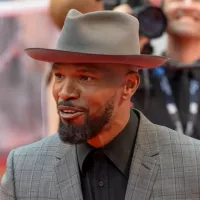Twins are offspring resulting from the same pregnancy, categorized as either monozygotic (identical) or dizygotic (fraternal). Identical twins arise from a single fertilized egg that splits into two embryos, resulting in shared sex and nearly identical genetic makeup. Fraternal twins develop from two separate eggs fertilized by different sperm, leading to potentially different sexes and genetic profiles. Rarer instances include fraternal or semi-identical twins sharing a mother but having different fathers. Twin studies are invaluable in genetics, helping scientists discern the influence of heredity and environmental factors on various traits and conditions.
1980: Increase in Twin Births in the US
From 1980, the number of twin births in the United States started to rise.
1980: Twin birth rate increase in the US
In 1980, the human twin birth rate in the United States was 9.4 twin sets (18.8 twins) per 1,000 births.
1981: Study on Polar Body Twin Fetus
In 1981, a study of a deceased XXX twin fetus suggested it was likely a polar body twin, though it shared a placenta with its healthy twin. The possibility of a healthy fetus resulting from polar body twinning was uncertain.
1992: Study on Heteropaternal Super fecundation
A 1992 study estimated that the frequency of heteropaternal superfecundation among dizygotic twins in paternity suits was approximately 2.4%.
1993: Mixed Twins Born to Biracial Couple
In 1993, dizygotic twins with differing ethnic and racial features were born in London to a white mother and Caribbean father.
1997: 52% Rise in Twin Births in the US
By 1997, the number of twin births in the United States had risen 52% since 1980, potentially due to fertility treatments and growth hormones in food.
2003: Sesquizygotic Twinning and Triploidy Study
In 2003, a study argued that many cases of triploidy arise from sesquizygotic (semi-identical) twinning, which occurs when a single egg is fertilized by two sperm and splits the three sets of chromosomes into two separate cell sets.
2006: Dairy Products and Dizygotic Twinning
A 2006 study found that insulin-like growth factor in dairy products may increase the chance of dizygotic twinning, noting vegan mothers are less likely to have twins.
2007: Study on Chimeric Twins with Different Sex Chromosomes
In 2007, a study reported a case of living chimeric twins sharing identical maternal chromosomes but having distinct paternal chromosomes, one intersex XX and one XY male.
2007: Theory on Monozygotic Twinning and IVF
In 2007, a theory related to in vitro fertilization (IVF) proposed that monozygotic twins may form when a blastocyst contains two inner cell masses (ICM), each leading to a separate fetus.
2008: Caesarean Section Rate for Twin Pregnancies in the US
In 2008, approximately 75% of twin pregnancies in the United States were delivered by caesarean section.
2009: Peak of twin birth rate increase in the US
By 2009, the human twin birth rate in the United States had risen to 16.7 twin sets (33.3 twins) per 1,000 births, marking a 76% increase from 1980.
2011: Twin Births and Assisted Reproductive Technology
By 2011, it was estimated that 36% of twin births in the United States resulted from conception by assisted reproductive technology.
2012: Polar Body Twinning Study Results
In 2012, a study found that it is possible for a polar body to result in a healthy fetus.
2014: Ward on Human Controlled Environment and Twinning
In 2014, Ward discussed how human-controlled environments lead to positively selected adaptation of twinning.
2016: First Report of Monozygotic Twinning in Dogs
In 2016, the first report of monozygotic twinning in dogs confirmed by DNA profiling was recorded following a C-section of an Irish Wolfhound.
November 17, 2018: First Twin Born 97 Days Apart
On November 17, 2018, the first of twins was born in Cologne, Germany, with the second twin born 97 days later, potentially setting a worldwide record.
2018: Marco Varella's study on dizygotic twinning in animals
In 2018, Marco Varella's study proved that smaller species experiencing infertility in old age and unstable habitats due to increased predation or human interference have undergone natural selection to gain higher twinning propensities. Varella's research focused on Vespertilionidae and Cebidae species, demonstrating that such species adaptively increase twinning rates to counteract high mortality and ensure reproductive survival under challenging conditions.
2018: Varella's research on cebidae genus twinning.
In 2018, Varella observed that monkeys in the Cebidae genus are more likely to produce twins due to their small size and insect-based diet. This is because their size indicates shorter gestation periods and the rapid maturation of offspring. The smaller size of the Cebidae genus also makes these species more susceptible to predators, thus triggering the heightened pace of birth, maturation, reproduction, and death.
2019: Cases of Semi-Identical Twins Reported
As of 2019, only two cases of semi-identical twins (sesquizygotic) have been reported, theorized to occur when an ovum is fertilized by two sperm.
January 2021: Research on Genetic Differences in Identical Twins
In January 2021, research published in Nature Genetics suggested that identical twins have genetic differences originating in early embryonic development.
2021: Guilherme Siniciato Terra Garbino's study on evolution of litter size in bats
In 2021, Guilherme Siniciato Terra Garbino's study on the evolution of litter size in bats revealed that the Vespertilionidae genus exhibits higher twinning propensities due to their roosting habitats. Phylogenetically, the common ancestor of bats possessed a higher twinning propensity, which was subsequently lost and regained eighteen times in evolutionary history. While subfamilies like Myotinae and Murinae lost this trait, Vespertilionidae retained it due to mutation and environmental conditions that triggered natural selection. The exposed roosting locations of Vespertilionidae led to increased mortality rates, which natural selection counteracted by positively selecting for high twinning propensity, enhancing both twin production and reproductive survival.
2021: Whitcomb on Dizygotic Twinning in Animals
In 2021, Whitcomb stated that species such as sheep, goats, and deer have a higher propensity for dizygotic twinning.
2022: Rickard on Infant Mortality Rate and Twinning
In 2022, Rickard mentioned the correlation between high twinning propensity and infant mortality rate.
Mentioned in this timeline
The United States of America is a federal republic located...
Germany officially the Federal Republic of Germany is a Western...

The heart a muscular organ in humans and animals pumps...
Iceland is a Nordic island country situated between the North...
The dog also known as the domestic dog is a...
Trending

9 months ago Jamie Foxx at 'Number One on the Call Sheet' premiere, addresses DEI rhetoric.

5 months ago Téa Leoni and Tim Daly Get Married After Years Together: Intimate Wedding

7 days ago Dick Vitale and Charles Barkley Team Up for College Basketball Broadcasts This Season
4 days ago Mortgage Rates Fall: Refinance Opportunities and Lender Options Emerge in December 2025
14 days ago Matt Rogers' brief moment: Comedian strips down, ignites wild reactions, fans are feral.

Fraser Minten is a Canadian professional ice hockey centre currently playing for the Boston Bruins in the NHL He was...
Popular
Matt and Ross Duffer known as the Duffer Brothers are...

Candace Owens is an American conservative political commentator and author...

Ilhan Omar is an American politician currently serving as the...

XXXTentacion born Jahseh Dwayne Ricardo Onfroy was a controversial yet...

Tom Cotton is an American politician and Army veteran currently...

Harriet Tubman was a pivotal American abolitionist and social activist...
